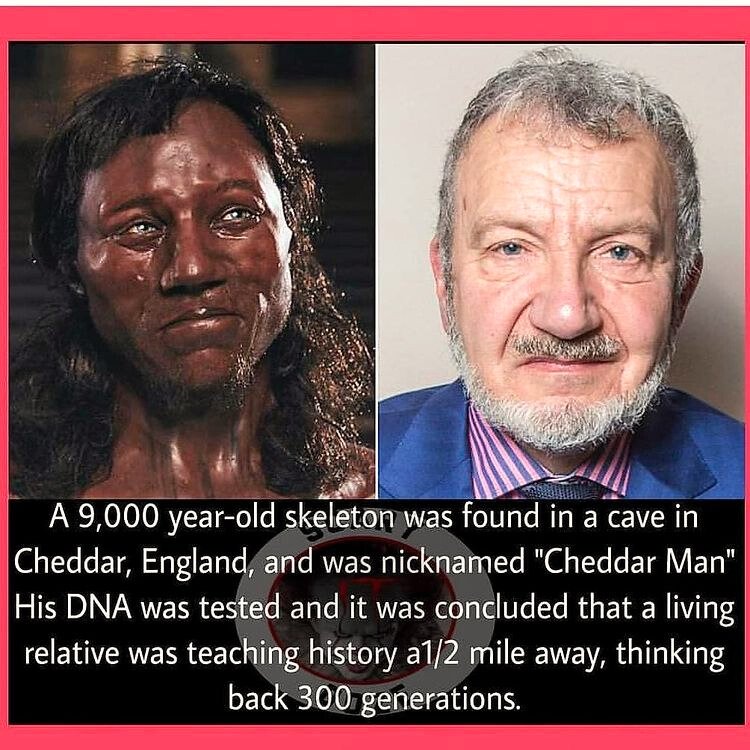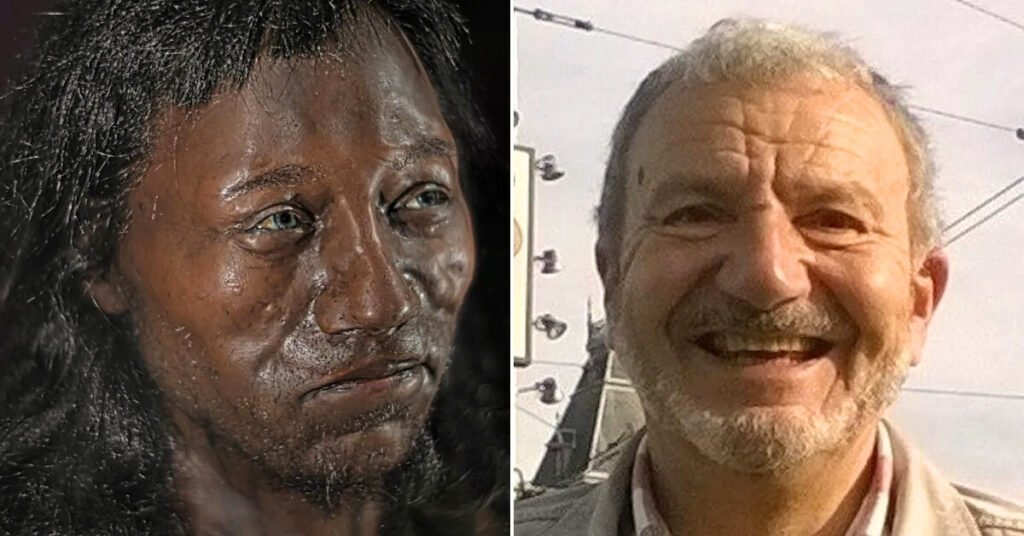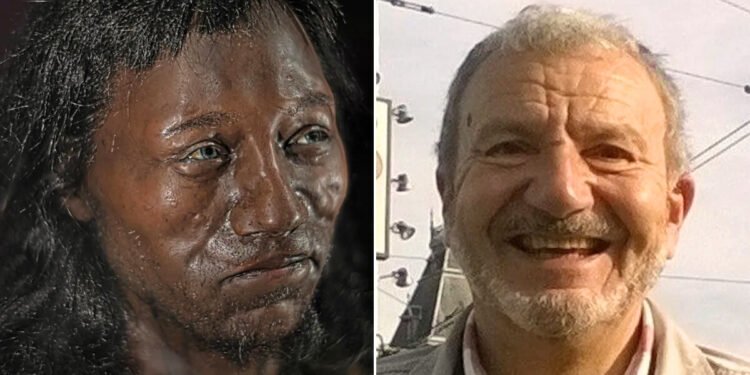While the British Royal Family traces its roots back to King Ecgberht (circa 775–839), a recent DNA discovery has revealed an even deeper ancestral link. In an astonishing twist, a Somerset history teacher named Adrian Targett has been identified as a direct maternal descendant of Cheddar Man, Britain’s oldest complete skeleton, linking him across roughly 300 generations to this ancient ancestor.
In the scenic Cheddar Gorge in Somerset, a limestone ravine filled with millennia-old secrets, Cheddar Man’s story began in 1903. His skeleton, remarkably preserved, was unearthed during a drainage renovation in Gough’s Cave. This discovery provided a rare glimpse into Mesolithic Britain, a time when the landscape was largely forested and Britain was connected to continental Europe. Cheddar Man, a young man in his twenties, stood at about 5 feet 5 inches and was laid to rest in the cave following the customs of his era.

Though Cheddar Man’s remains captivated scientific and public interest for much of the 20th century, it wasn’t until the 1990s that a remarkable connection was made. In 1996, Bryan Sykes, a geneticist at the University of Oxford, extracted mitochondrial DNA from one of Cheddar Man’s molars. What he found would bridge thousands of years: both Cheddar Man and Adrian Targett belonged to the same mitochondrial DNA haplogroup, U5, indicating a shared maternal lineage. Since mitochondrial DNA is inherited maternally, this discovery meant that Targett and Cheddar Man were directly linked through an unbroken maternal line spanning over 9,000 years.

Targett’s genetic connection to Cheddar Man sparked widespread media interest as he unwittingly claimed the title of the “farthest traced descendant by DNA” and the most distantly confirmed relative of an ancient Briton. However, while Targett’s maternal lineage is shared with Cheddar Man, it only represents a fraction of his total ancestry.
The revelation carried added resonance due to Targett’s own proximity to Cheddar Man’s final resting place; he lives just half a mile from the cave. This remarkable continuity suggests that his maternal lineage has likely remained in the Cheddar Gorge area for thousands of years, passing down the legacy of Britain’s early inhabitants.
Modern and Ancient Traits in Unexpected Combination
The connection between Cheddar Man and Targett offers a unique glimpse into not only shared ancestry but also shared traits. Upon viewing a new reconstruction of Cheddar Man, based on recent genetic analyses, Targett noted several familiar features. “There is definitely a resemblance when you look across photos of my cousins,” he remarked and ”I can definitely see a family resemblance. The nose is just like mine, and we both have those blue eyes.”

However, there are notable differences. Cheddar Man’s genetic profile, which underwent a detailed reanalysis in 2018 by a team from London’s Natural History Museum, revealed traits that might surprise many today. A full genome was sequenced from bone powder carefully extracted from Cheddar Man’s skull, revealing that he likely had dark to black skin, curly hair, and blue eyes. This striking combination challenges common expectations about the appearance of early Britons and highlights the complex interplay of genetics, environment, and migration over millennia.
Dr. Tom Booth is a researcher at the Natural History Museum and He explained the broader significance of Cheddar Man’s appearance. “He is only one person, but also indicative of the population of Europe at the time. They had dark colour skin and most of them had pale-colored eyes, either blue or green, and dark brown hair.” Booth pointed out that Cheddar Man’s appearance defies simplistic ideas about genetic traits, showing that pale eyes were likely present in Europe long before lighter skin or blonde hair became common.
Current research suggests that the pale skin associated with modern Europeans developed far more recently than once thought. Previously, scientists believed lighter skin emerged around 40,000 years ago, but recent studies indicate that it likely spread about 8,500 years ago. Geneticists at Harvard University suggest this change may have been an evolutionary response to diets lower in vitamin D as agricultural practices spread.
Although Cheddar Man belonged to a population that later mixed with agricultural migrants to Britain, about 10% of the genetic ancestry of present-day Britons can be traced to these ancient European hunter-gatherers. Nonetheless, the Mesolithic population Cheddar Man belonged to was largely replaced by incoming farmers, reshaping the genetic landscape of the British Isles.
A Timeless Story in a Familiar Place
The tale of Cheddar Man and Adrian Targett offers a rare and tangible link to Britain’s distant past. Today, Targett lives and works as a history teacher just a short walk from where Cheddar Man was laid to rest. His connection serves as a poignant reminder of both the persistence and evolution of human history, exemplifying the continuity of human presence in the Cheddar Gorge region across nearly 10,000 years. From ancient hunter-gatherers to modern educators, our human story unfolds through centuries of change, adaptation, and shared heritage—all within the same landscape.
As genetic science continues to uncover new layers of our past, stories like that of Cheddar Man and Adrian Targett emphasize that the journey of our species is as much about our shared roots as it is about the diverse paths we take.










